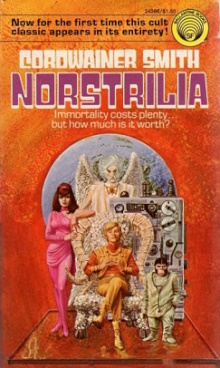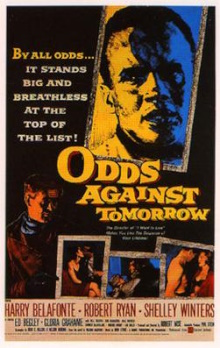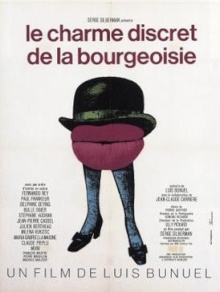We’re probably going to be slowly working through the filmography of Jean-Pierre Melville next. This director is considered a spiritual father of the French New Wave and this was his first feature film, itself based on a book written when France was under occupied by Nazi Germany. It’s such an impressive film that does so much with so little. Most of it consists of just the same three people in a salon, and this is very much a monologue driven film. Yet it conveys so much of the pain and humiliation of being occupied and how one must passively resist even when active resistance is impossible.
Continue reading Le Silence de la mer (1949)All posts by Wan Kong Yew
Licorice Pizza (2021)
Paul Thomas Anderson is one of the modern grandmasters of American cinema so his oeuvre is usually a must watch. I held off on this one for a long while as it didn’t sound like something I would like and unfortunately it turned out to be true. This is one of those made by Hollywood for Hollywood films that is difficult for those on the outside to decipher. The central story about an inappropriate, and perhaps toxic, relationship felt unappealing to me though I find it amusing to think of it as a kind of antiromantic romance film.
Continue reading Licorice Pizza (2021)Nobel Prizes 2023
Last year, everyone expected the prize for physiology or medicine to a specific winner but that prediction failed to pan out. That is rectified this year as the prize goes to Katalin Karikó and Drew Weissman for their discoveries concerning nucleoside base modifications that make mRNA vaccines possible. Such vaccines are an obvious idea but it proved difficult to be made in practice as the production of mRNA without cell culture, called in vitro transcription led to mRNA that causes inflammatory responses.
Karikó and Weissman knew that the bases in RNA from mammalian cells are frequently chemically modified while in vitro transcribed mRNA is not. So they produced different variants of mRNA with unique chemical alterations in their bases and discovered that this change did indeed almost completely abolish the unwanted inflammatory response, making mRNA vaccines viable.
The physics prize is for attosecond physics and is pretty easy to understand as well. An attosecond is a billionth of a billionth of a second and this is the scale that we need to use to examine the movements and reactions of electrons. The prize goes to Anne L’Huillier, Pierre Agostini and Ferenc Krausz. L’Huillier discovered that when an infrared laser passes through a noble gas, the laser imparts energy to the atoms that is then released as light. The light waves interact with one another so that when their peaks coincide, they would become more intense.
Agostini and Krausz, working independently, both turned this insight into workable technology to create pulses of light in the hundreds of attoseconds range. Today this has been further improved down to the dozens of attoseconds range and this is what allows us to see electrons in the same way that very fast camera shutters allows us to capture fast moving objects.
The prize for chemistry is for quantum dots and who would have thought that the marketing blurb for expensive televisions isn’t just bunk. Every high school student who has studied chemistry knows that the properties of an element are determined by how many electrons it has. However on a very small scale, the properties may be governed by quantum phenomena instead and this includes their colors which can vary depending on their size.
The prize goes to Alexei Ekimov, Louis Brus and Moungi Bawendi for making that knowledge work in practice. Ekimov first demonstrated the effect in colored glass, using nanoparticles of copper chloride. Brus later did it with particles floating freely in a fluid and Bawendi improved the process to produce the quantum dots to make it more reliable. The result that quantum dots today are a real thing that are used in computer monitors, television screens and many other applications.
Finally the prize for economics goes to Claudia Goldin for her work in investigating female participation in the labor market and explaining the gender gap in earnings. Trawling through 200 years of data, she showed that female labor did not have a continuously upward trend but instead forms a U-shape. Married women were heavily involved in labor in agrarian societies but worked less during the transition to an industrial society. With the rise of the service economy, female work is trending upwards again.
She also demonstrated how factors like women’s education levels, the invention of the contraceptive pill and having control over when a woman has her first child affect women’s earnings. One particularly interesting finding is in so-called greedy professions like the legal or financial industry which rewards those willing to put in extremely long and unpredictable hours with high pay. In many cases, families maximize their earnings by having the husband specialize in his career leaving the wife with all of the childcare duties while forsaking her own career.
Norstrilia
Continuing on my tour of the greatest science-fiction novels ever written, here is Norstrilia, the only novel published by Cordwainer Smith. Smith is genuinely one of the greats of science-fiction and is mainly known for his short stories. His real life is arguably as fascinating as his fiction, being an East Asian scholar who called Sun Yat-Sen his godfather and an expert in psychological warfare who worked for the CIA. I found this book to be an impressive example of building a complete fictional future history setting and a incisive dissection of what it means to be human. Due to its characters and moral sensibility, I can’t say that I enjoyed it very much. It’s yet another book that really is a product of its time.
Continue reading NorstriliaOdds Against Tomorrow (1959)
This is a film noir that is remarkable on multiple measures for something from the 1950s. The lead is a black man, played by superstar Harry Belafonte. It’s nominally a film about a bank robbery, but the robbery itself is the least important part. It’s instead an in-depth portrait of two very different men and why they were driven to commit this crime. Finally, even though it’s a noir, most of the scenes actually take place in the day time. It’s all the better for it too as we then get all these outdoor shots of the New York of the period. The anti-racism message is too on the nose for us now but the film as a whole is solid and well worth watching even today.
Continue reading Odds Against Tomorrow (1959)The Discreet Charm of the Bourgeoisie (1972)
If the last couple of films by Luis Buñuel have been less surreal than usual, this one more than makes up for it. It’s less a film than a series of vignettes about a group of friends who keep trying to sit down for a meal yet fail for increasingly ridiculous reasons. This counts as black humor but instead of laughing, you’d probably be wincing instead. The critique against the bourgeoisie is well observed and I love how Buñuel was seemingly inspired by a simple story of friends showing up unexpectedly. It’s a little too silly for me to care much about however and I’m not sure I even want to spend the brainpower to figure out what some of the weirder stories even mean.
Continue reading The Discreet Charm of the Bourgeoisie (1972)Opus Magnum

I haven’t skipped a single one of Zachtronics’ puzzle games so far but now I’m thinking that I should probably have skipped this one. To me this feels like a rehash of SpaceChem but with hexes instead of squares. In reality, it goes back to an even earlier game by Zach Barth before he even founded the company but that was before my time. I loved SpaceChem but it was so difficult that I could never do some of the later puzzles. This title however is in line with their more recent games with drastically reduced difficulty. The main game posed no challenge to me at all and the accompanying story is so shallow I wondered why there needed to be a story at all.
Continue reading Opus Magnum



